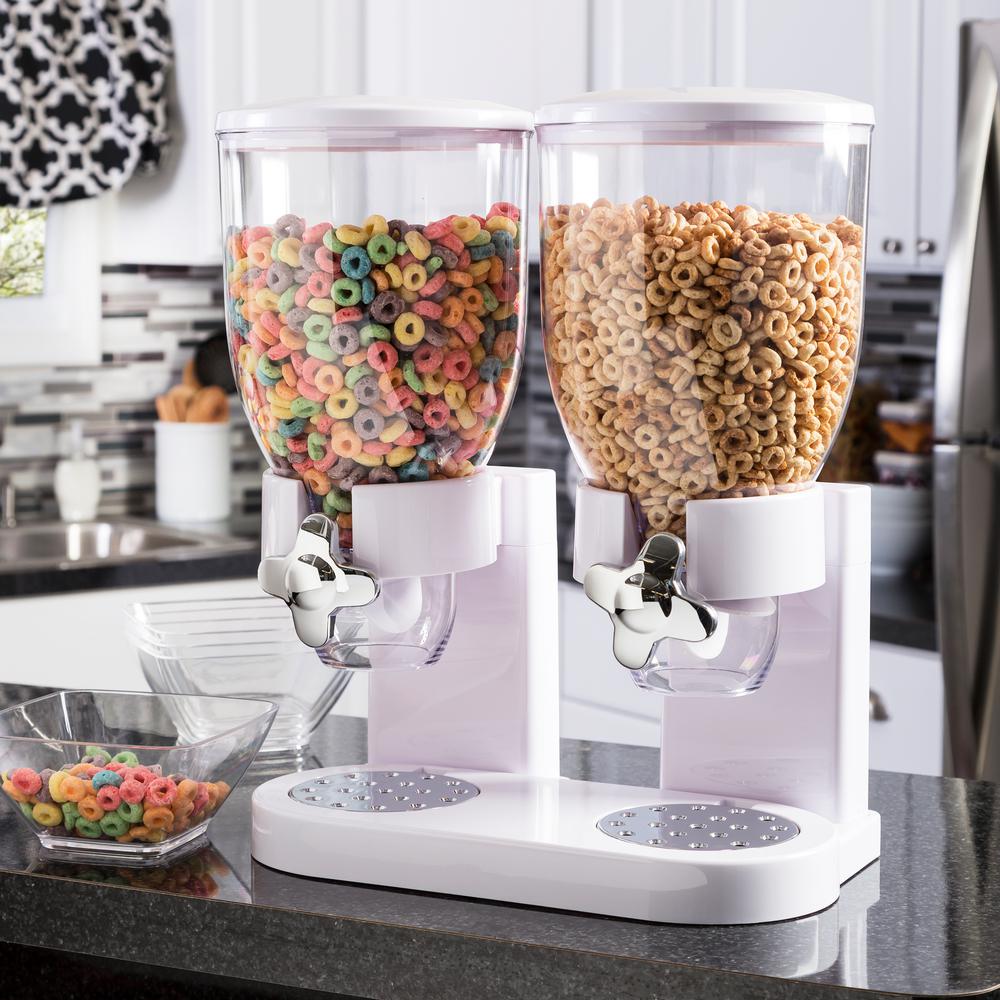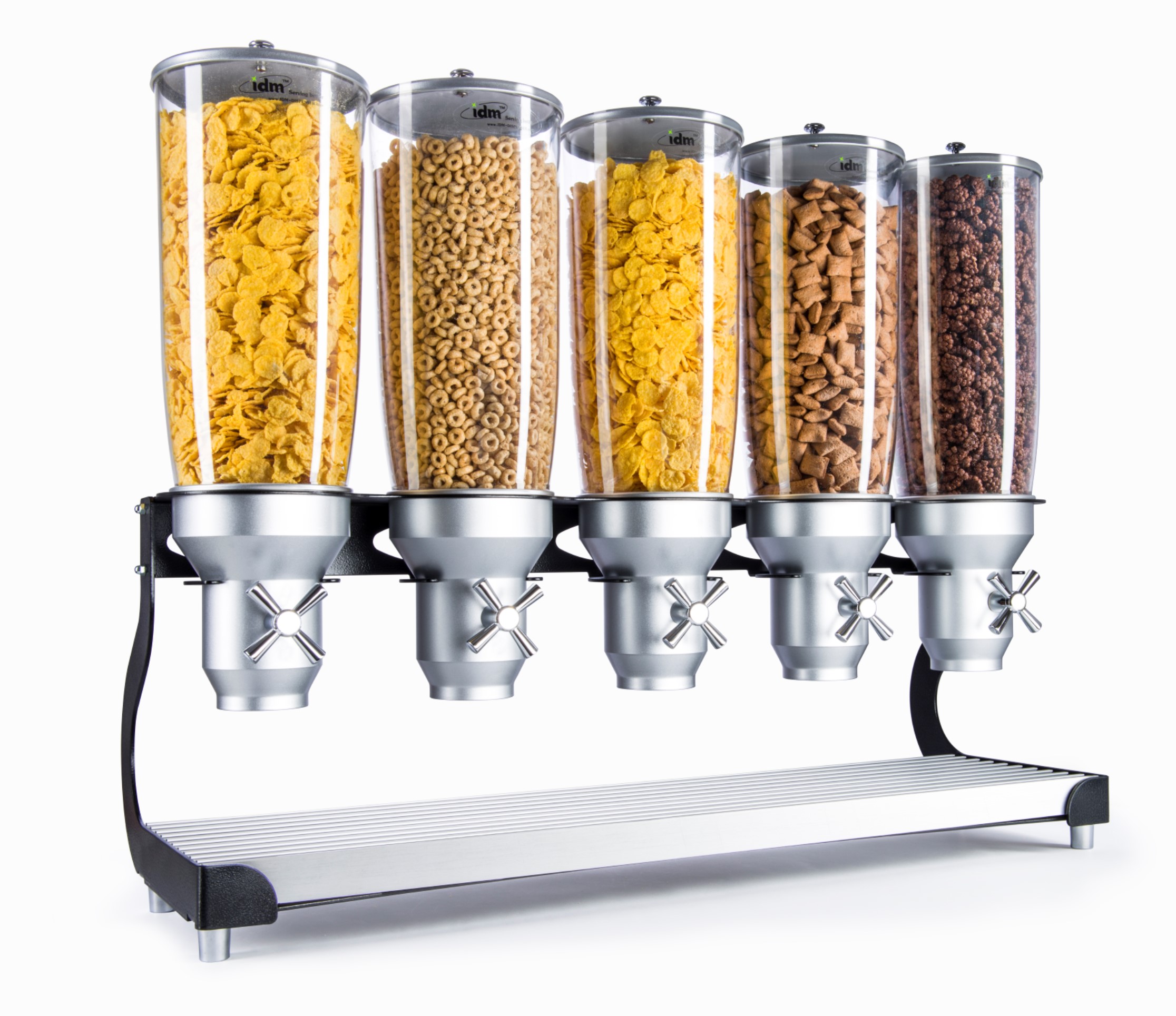Introducing the world of food dispensers, a realm where convenience meets efficiency. From manual to automatic, gravity-fed to portion-controlled, these ingenious devices are transforming the way we dispense food across various industries and settings.
In this comprehensive guide, we delve into the intricate details of food dispensers, exploring their types, features, applications, and maintenance. We’ll also uncover emerging trends and innovations that are shaping the future of food dispensing.
Types of Food Dispensers

Food dispensers are devices used to dispense food in a controlled and convenient manner. They come in various types, each with its advantages and disadvantages, catering to different needs and applications.
The primary types of food dispensers include:
Manual Food Dispensers
Manual food dispensers require manual operation to dispense food. They are typically less expensive than automatic models and are suitable for low-volume applications.
Advantages:
- Lower cost
- Simple to use
- No electricity required
Disadvantages:
- Manual operation can be time-consuming
- Inconsistent portion sizes
Automatic Food Dispensers
Automatic food dispensers use a motor or other mechanism to dispense food. They are more expensive than manual models but offer greater convenience and consistency.
Advantages:
- Convenient and hands-free operation
- Consistent portion sizes
- Can be programmed to dispense food at specific times
Disadvantages:
- Higher cost
- Requires electricity
- More complex to use
Gravity-Fed Food Dispensers
Gravity-fed food dispensers rely on gravity to dispense food. They are simple and inexpensive, making them suitable for low-volume applications.
Advantages:
- Simple design
- Low cost
- No electricity required
Disadvantages:
- Limited capacity
- Inconsistent portion sizes
Portion-Controlled Food Dispensers
Portion-controlled food dispensers are designed to dispense specific portions of food. They are ideal for applications where precise portion control is essential.
Advantages:
- Accurate portion control
- Reduces waste
- Improves efficiency
Disadvantages:
- Higher cost
- More complex to use
Features and Specifications

Understanding the key features and specifications of food dispensers is essential to select the most suitable option for your specific needs. These attributes influence the functionality, capacity, and overall effectiveness of the dispenser.
The table below provides a comprehensive overview of the key features and specifications to consider:
| Feature | Description | Significance |
|---|---|---|
| Capacity | The volume of food that the dispenser can hold. | Determines the frequency of refilling and the suitability for different applications. |
| Material | The material used in the construction of the dispenser. | Affects durability, ease of cleaning, and potential for contamination. |
| Power Source | The method by which the dispenser operates. | Influences portability, cost of operation, and potential for power outages. |
| Dimensions | The physical size of the dispenser. | Determines the space required for installation and the portability of the unit. |
Applications and Uses
Food dispensers have found widespread applications across diverse industries and settings, catering to the unique needs of each context.
In restaurants and cafeterias, food dispensers play a crucial role in maintaining hygiene and efficiency. They allow for controlled portioning, minimizing waste and ensuring consistent serving sizes. The ability to store and dispense various food items, from salads and soups to beverages, enhances convenience and reduces wait times.
Hospitals
In hospitals, food dispensers are essential for providing patients with nutritious and timely meals. They offer a safe and hygienic way to distribute food, particularly for those with specific dietary requirements or limited mobility. Dispensers can be customized to dispense specific portions, ensuring patients receive the appropriate calorie intake.
Homes
In homes, food dispensers offer convenience and portion control. They are ideal for storing and dispensing dry foods like cereals, grains, and snacks. By controlling portion sizes, dispensers help individuals manage their calorie intake and reduce overeating.
Design and Construction: Food Dispenser
Food dispensers are designed and constructed with a focus on durability, reliability, and ease of use. They are typically made from durable materials such as stainless steel or polycarbonate, which are resistant to corrosion and wear.
The mechanisms used in food dispensers vary depending on the type of dispenser. Gravity-fed dispensers rely on the force of gravity to dispense food, while mechanical dispensers use a variety of mechanisms, such as gears, motors, and springs, to dispense food.
Safety features are an important consideration in the design of food dispensers. These features include covers to prevent contamination, locks to prevent unauthorized access, and sensors to detect when the dispenser is empty.
Materials
- Stainless steel: Resistant to corrosion and wear, easy to clean, and durable.
- Polycarbonate: Durable, lightweight, and shatter-resistant.
- ABS plastic: Lightweight, durable, and resistant to chemicals.
Mechanisms, Food dispenser
- Gravity-fed: Uses gravity to dispense food, simple and reliable.
- Mechanical: Uses gears, motors, or springs to dispense food, more complex but allows for greater control over portion size.
- Electronic: Uses sensors and electronics to dispense food, allows for precise portion control and monitoring.
Safety Features
- Covers: Prevent contamination of food.
- Locks: Prevent unauthorized access to food.
- Sensors: Detect when the dispenser is empty, preventing overfilling.
Maintenance and Cleaning

Maintaining food dispensers is crucial to ensure optimal performance, hygiene, and food safety. Regular cleaning and sanitizing prevent bacterial growth, maintain food quality, and extend the dispenser’s lifespan.
Cleaning Procedures
- Daily Cleaning:Wipe down the exterior and interior surfaces of the dispenser with a damp cloth and mild detergent. Pay attention to areas where food residue may accumulate.
- Weekly Cleaning:Disassemble the dispenser according to the manufacturer’s instructions. Wash all removable parts in hot soapy water, rinse thoroughly, and air dry.
- Monthly Sanitizing:Use a food-grade sanitizer to disinfect the dispenser’s surfaces and components. Follow the manufacturer’s instructions for dilution and application.
Materials Required
- Mild detergent
- Hot water
- Food-grade sanitizer
- Damp cloths
- Clean towels
Cost and ROI
The cost of food dispensers varies depending on several factors, including their size, features, and brand. Larger dispensers with more advanced features tend to be more expensive than smaller, simpler models. Additionally, dispensers from well-known brands may cost more than those from lesser-known brands.
Despite the initial investment, food dispensers can provide a positive return on investment (ROI) over time. By automating the food dispensing process, businesses can save on labor costs. Additionally, portion control features can help reduce food waste and ensure consistent serving sizes.
These factors can contribute to increased profitability and improved efficiency in foodservice operations.
Factors Influencing Cost
- Size: Larger dispensers typically cost more than smaller ones.
- Features: Dispensers with advanced features, such as temperature control or portion control, tend to be more expensive.
- Brand: Dispensers from well-known brands may cost more than those from lesser-known brands.
Potential ROI
- Labor savings: Food dispensers can automate the dispensing process, reducing the need for manual labor.
- Portion control: Dispensers can help ensure consistent serving sizes, reducing food waste and improving profitability.
- Increased efficiency: By automating the dispensing process, foodservice operations can become more efficient and productive.
Market Trends and Innovations
The food dispenser industry is constantly evolving to meet the changing needs of consumers and businesses. Emerging trends and innovations are shaping the future of food dispensing, making it more convenient, efficient, and sustainable.
Advancements in technology, design, and sustainability are driving innovation in the food dispenser industry. These trends are creating new opportunities for businesses to improve their operations and enhance the customer experience.
Technology Advancements
- Touchless Dispensing:Touchless food dispensers use sensors to detect the presence of a user’s hand, allowing for hygienic and convenient dispensing.
- Smart Dispensers:Smart food dispensers are connected to the internet and can collect data on usage patterns, inventory levels, and customer preferences. This data can be used to optimize operations and improve the customer experience.
- Mobile Ordering and Payment:Mobile ordering and payment apps allow customers to order and pay for food and drinks from their smartphones, eliminating the need for queues and cash transactions.
Design Innovations
- Compact and Modular Designs:Compact and modular food dispensers are designed to fit into smaller spaces and can be easily reconfigured to meet changing needs.
- Ergonomic Dispensers:Ergonomic food dispensers are designed to be easy and comfortable to use, reducing strain on employees and customers.
- Sustainable Materials:Food dispensers are increasingly being made from sustainable materials, such as recycled plastic and biodegradable materials, to reduce environmental impact.
Sustainability Initiatives
- Energy-Efficient Dispensers:Energy-efficient food dispensers use less energy to operate, reducing operating costs and environmental impact.
- Water-Saving Dispensers:Water-saving food dispensers use less water during the dispensing process, conserving a valuable resource.
- Reusable and Compostable Packaging:Food dispensers are increasingly offering reusable and compostable packaging options to reduce waste and promote sustainability.
These trends and innovations are transforming the food dispenser industry, making it more efficient, convenient, and sustainable. By embracing these advancements, businesses can improve their operations, enhance the customer experience, and contribute to a more sustainable future.
Case Studies and Examples
In the realm of foodservice, food dispensers have revolutionized the way establishments dispense food items, leading to improved efficiency, cost savings, and customer satisfaction. Let’s delve into real-world case studies that showcase the transformative impact of these dispensers in various industries.
Restaurant and Hospitality
In a bustling restaurant, a popular fast-food chain faced challenges with long queues and inconsistent food portioning. By implementing an automated food dispenser, they streamlined the ordering process, reducing wait times by 25%. The dispenser’s precise portioning ensured consistent food quality, resulting in reduced food waste and increased customer satisfaction.
Healthcare and Senior Living
Within a senior living facility, a healthcare provider sought a solution to provide nutritious meals to residents with varying dietary restrictions. A food dispenser customized with specific dietary profiles allowed residents to easily select meals that met their individual needs.
This enhanced their quality of life and reduced the burden on caregivers.
Retail and Convenience Stores
At a convenience store, a food dispenser filled with healthy snacks became a game-changer. Customers could quickly and conveniently grab a nutritious snack on the go, leading to increased sales and customer loyalty. The dispenser’s compact size and user-friendly interface made it a valuable addition to the store’s offerings.
Top FAQs
What are the different types of food dispensers?
Food dispensers come in various types, including manual, automatic, gravity-fed, and portion-controlled models.
What are the key features to consider when choosing a food dispenser?
Capacity, material, power source, and dimensions are important features to consider when selecting a food dispenser.
What are the benefits of using food dispensers in commercial settings?
Food dispensers offer benefits such as improved hygiene, portion control, efficiency, and labor savings.
